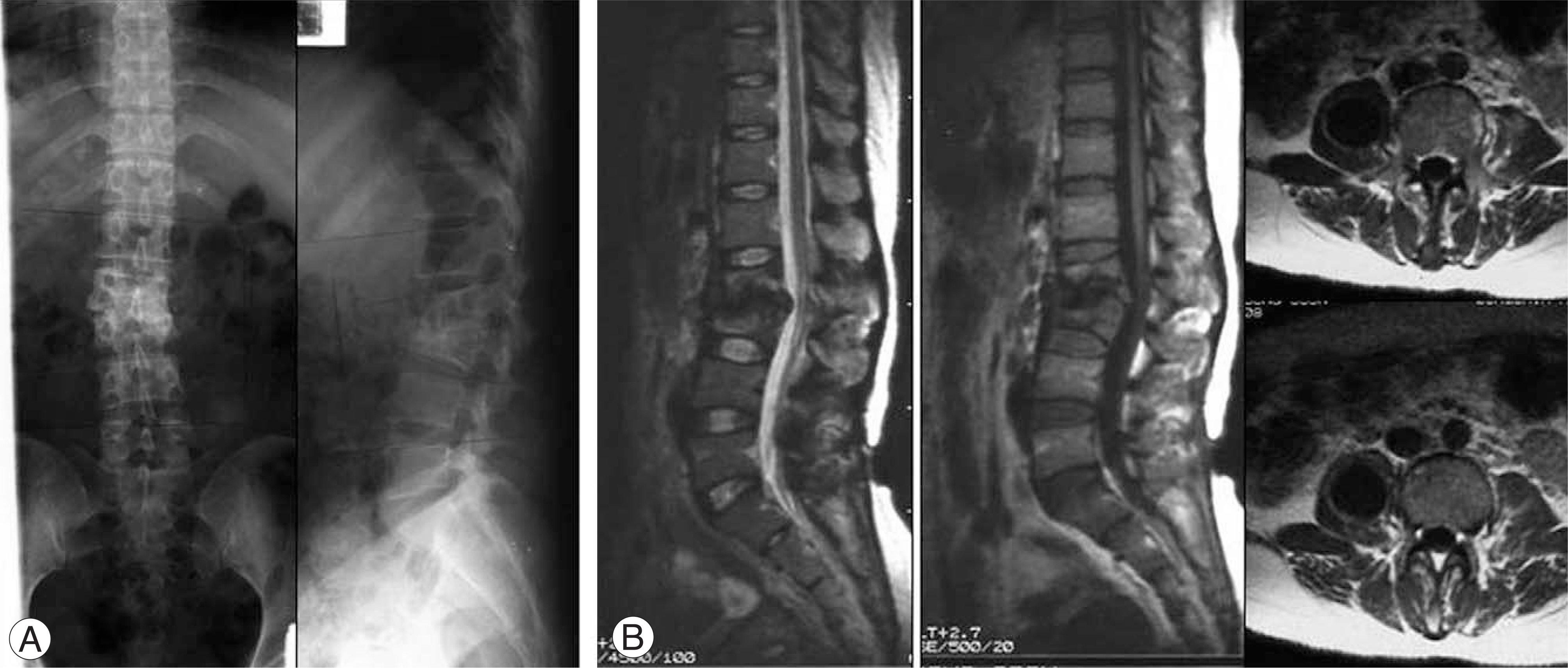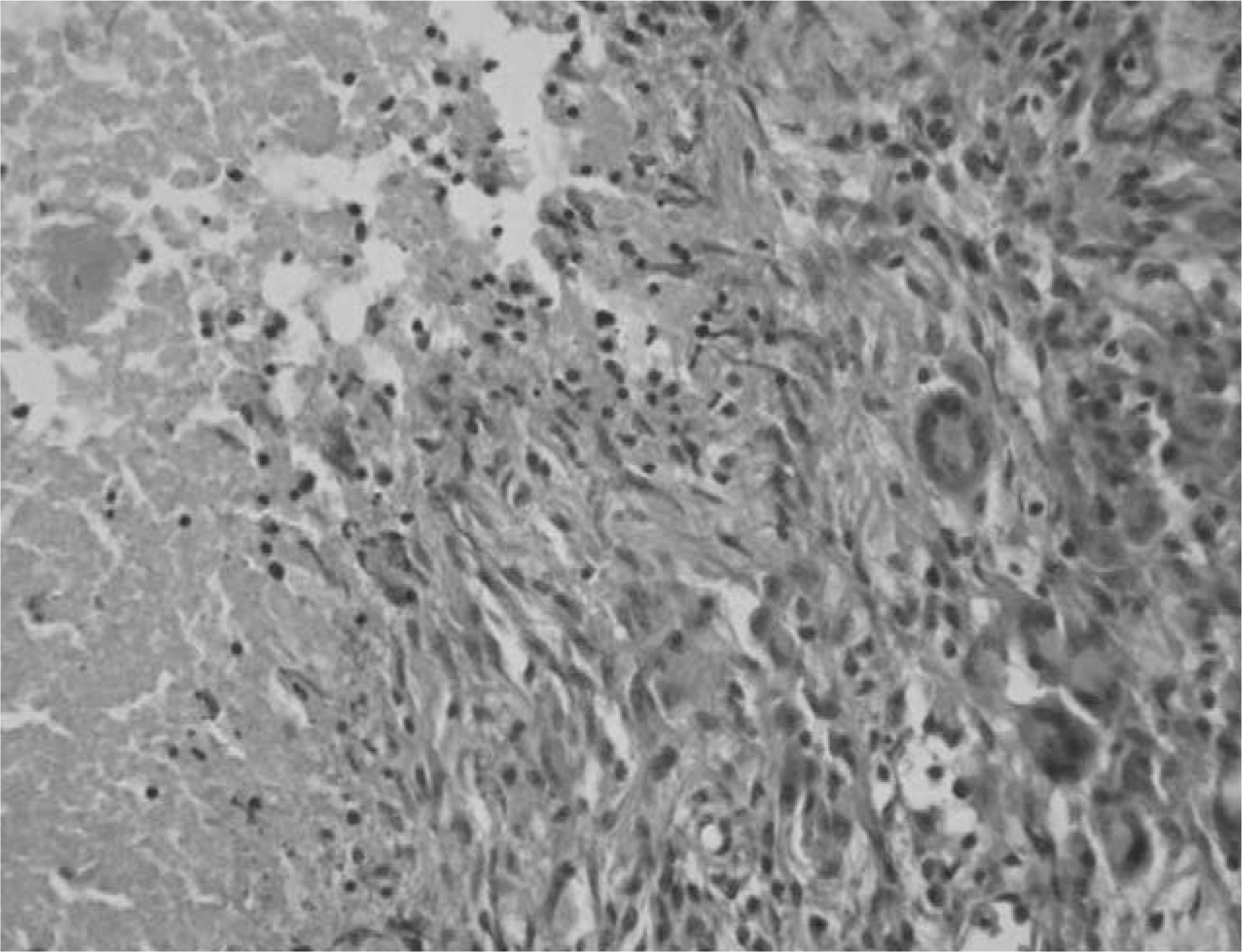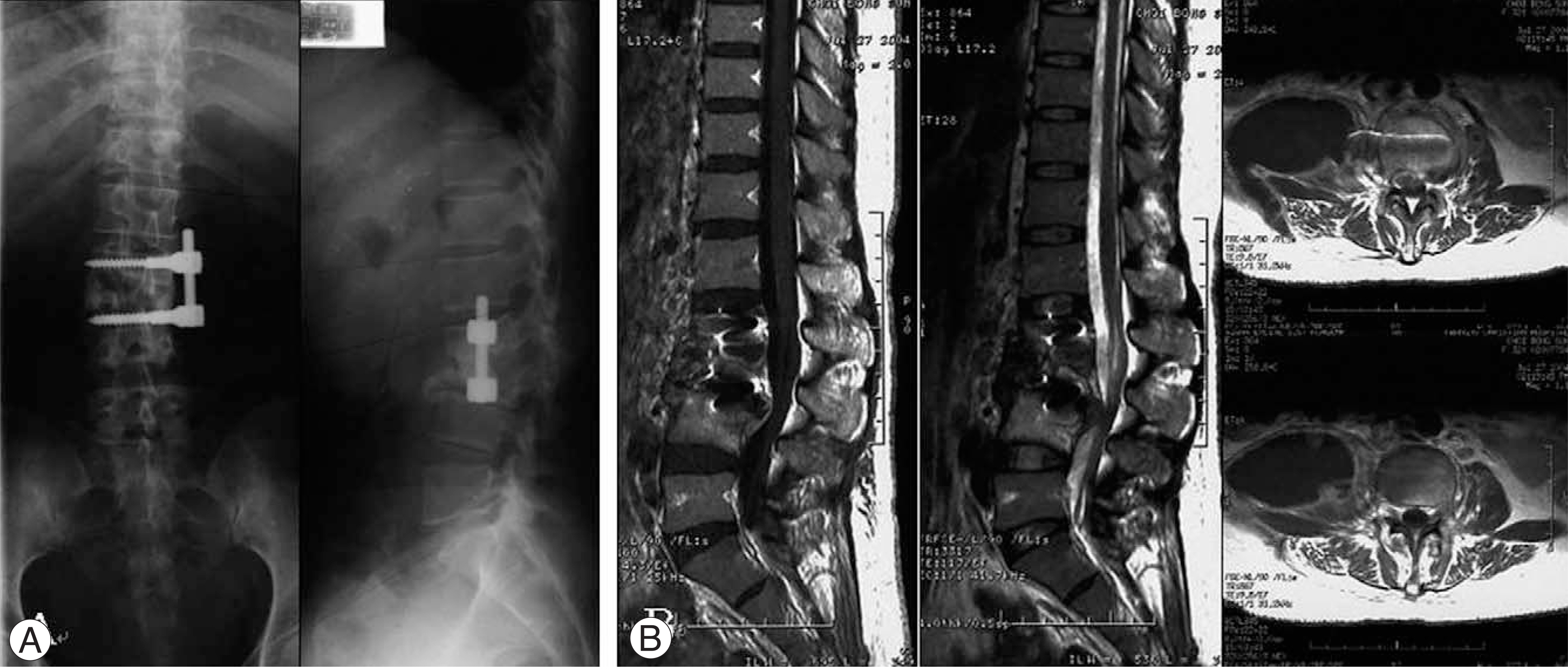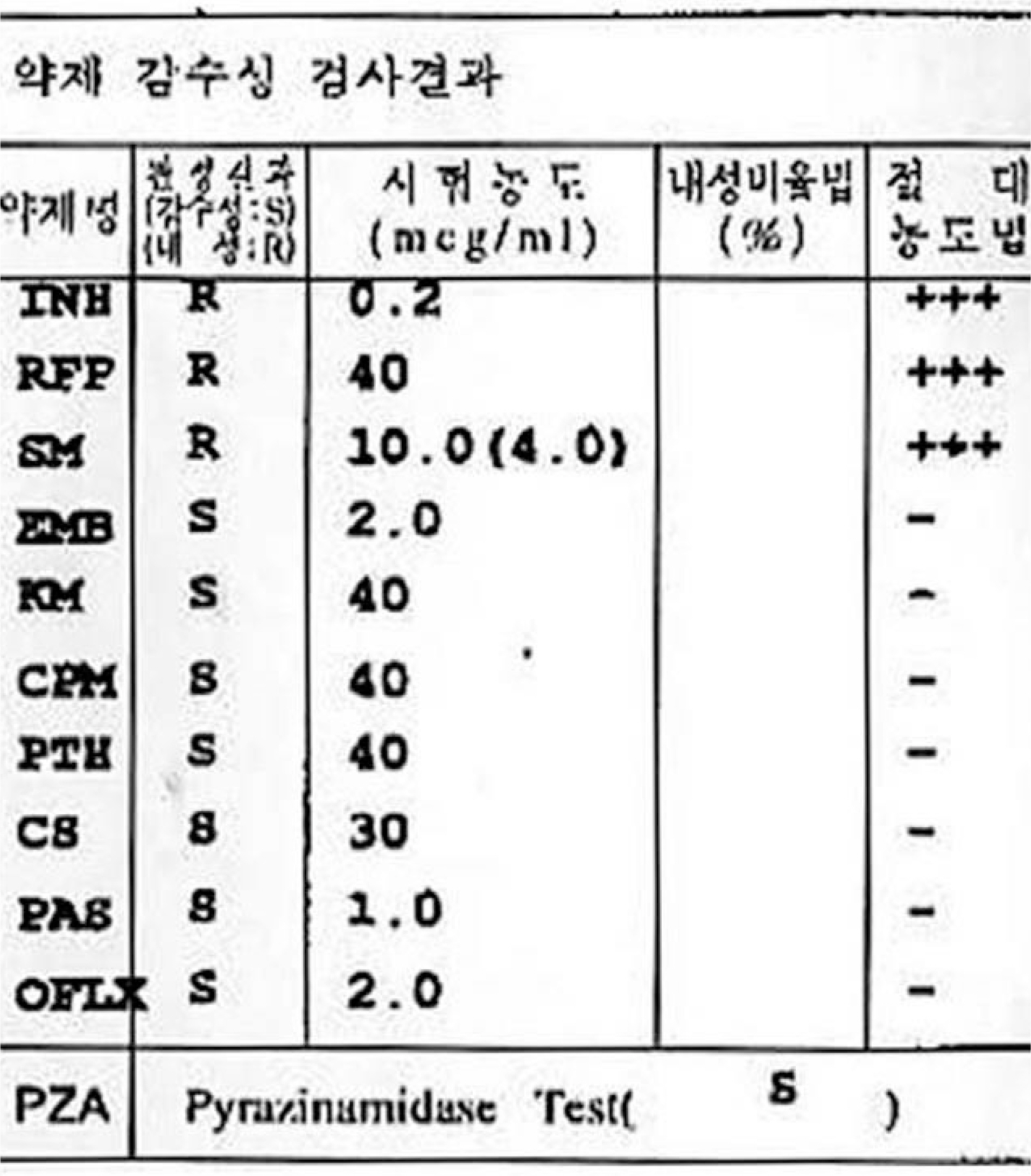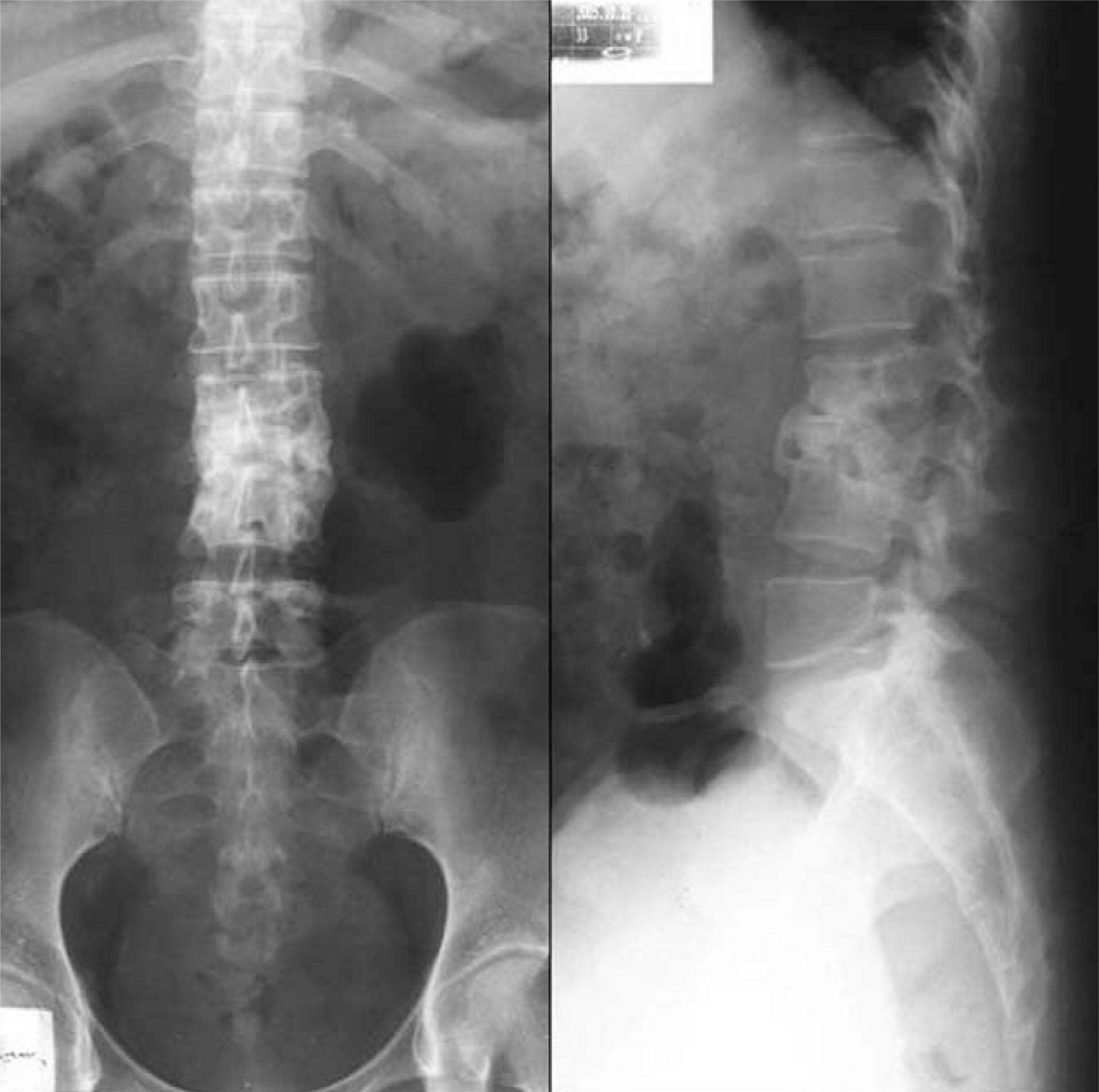J Korean Soc Spine Surg.
2008 Jun;15(2):102-105. 10.4184/jkss.2008.15.2.102.
Multidrug-resistant Tuberculosis Spondylitis: A Case Report
- Affiliations
-
- 1Department of Orthopedic Surgery, Kwang-ju Christian Hospital, Gwang-Ju, South Korea. stemcellchoi@yahoo.co.kr
- KMID: 2097839
- DOI: http://doi.org/10.4184/jkss.2008.15.2.102
Abstract
- Multidrug-resistant tuberculosis, resistant to at least isoniazid and rifampicin, continues to present a serious challenge to human health. However, there are no reports addressing multidrug-resistant tuberculous spondylitis in Korea. We report a case of multidrug-resistant tuberculous spondylitis at L2-L3 in a 30-year-old woman.
MeSH Terms
Figure
Reference
-
1). Br Med Res Counc. Treatment of pulmonary tuberculosis with streptomycin and paraaminosalicylic acid. Br Med J. 1950; 2:1073–1085.2). Bai GH. Anti-tuberculosis drug resistance in Korea. CDMR. 2005; 16:101–107.3). Chaulet P, Boulahbal F, Grosset J. Surveillance of drug resistance for tuberculosis control: why and how? Tuber Lung Dis. 1995; 76:487–492.
Article4). Ahn JI, Oh HY, Rah JH, Kang KS. A clinical study of tuberculous spondylitis. J Korean Orthop Assoc. 1981; 16:300–310.
Article5). Pablos-Mendez A, Raviglione MC, Laszlo A, et al. World Health Organization-International Union against Tuberculosis and Lung Disease Working Group on Anti-Tuberculosis Drug Resistance Surveillance. N Engl J Med. 1998; 338:1641–1649.6). Kim BJ, Lee HI, Lee DH, et al. The current status for Multidrug-resistant Tuberculosis in Korea. J of Tuberculosis and respiratory disease. 2006; 60:404–411.7). Ahn JS, Lee JK, Jeon TS, Kwon YS, Kwak SK. Changes of kyphotic angle following operative treatment of tuberculous spondylitis. J Korean Soc Spine Surg. 2001; 8:148–155.
Article8). Martin NS. Tuberculosis of the spine. A study of the results of treatment during the last twenty-five years. J Bone Joint Surg Br. 1970; 52:613–628.
- Full Text Links
- Actions
-
Cited
- CITED
-
- Close
- Share
- Similar articles
-
- Multidrug-resistant Tuberculosis Spondylitis: A Case Report
- Differentiating between Intestinal Tuberculosis and Crohn’s Disease May Be Complicated by Multidrug-resistant Mycobacterium tuberculosis
- The survey for clinical course of intractable pulmonary tuberculosis
- Multidrug-resistant Tuberculosis
- Risk Factors for Primary Multidrug Resistant Tuberculosis

